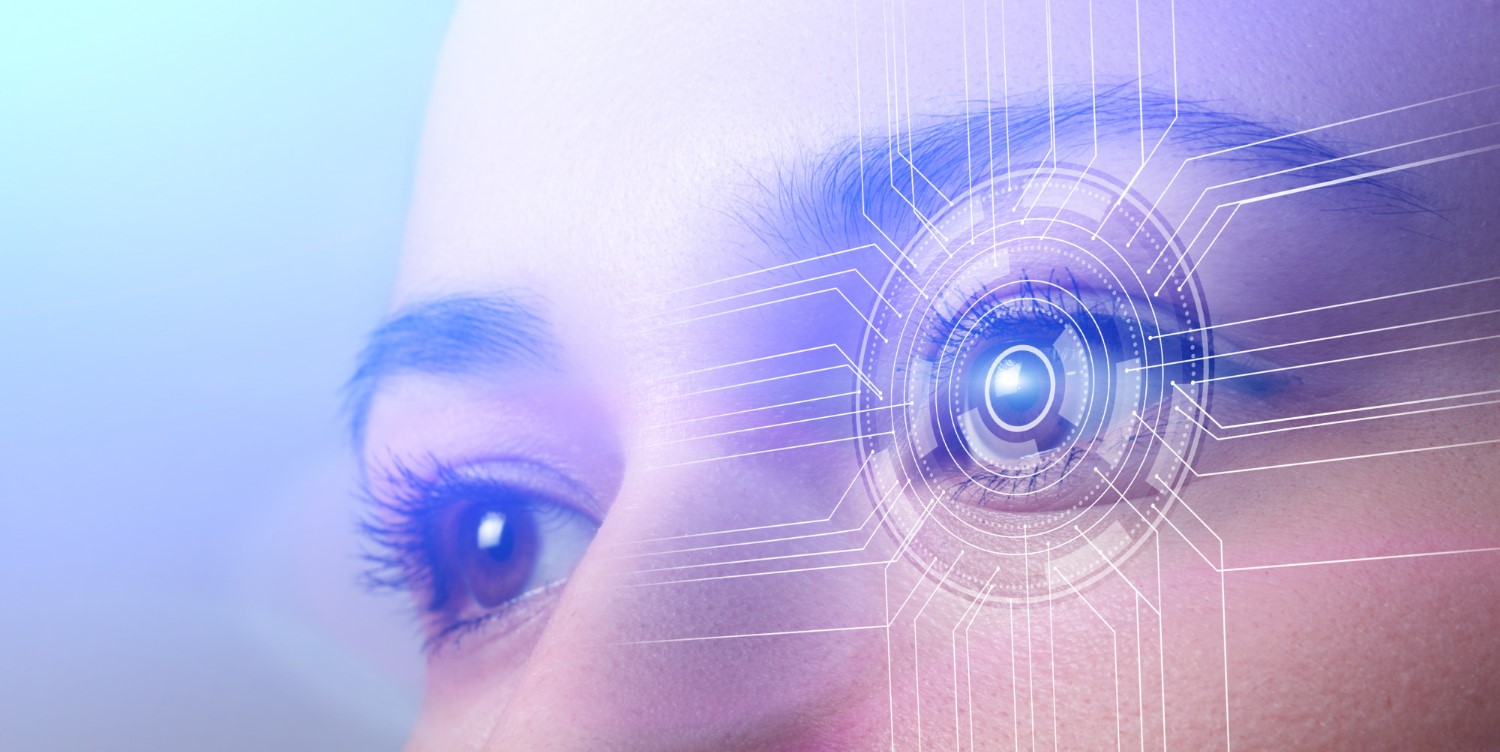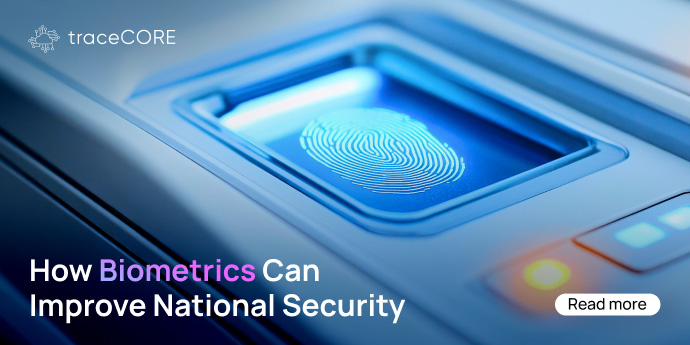Biometric Systems
Is Biometrics a Necessary Security Measure or a Surveillance Tool?

Biometric technologies — such as facial recognition, fingerprint scanning, voice identification, and other — have become integral to modern security systems. Governments, financial institutions, and businesses increasingly rely on these technologies to authenticate identities, combat fraud, and enhance user experiences.
However, the rapid adoption of biometrics raises critical questions: Are these systems essential for safeguarding society, or do they represent a step toward pervasive surveillance? What a secure biometric system should actually be like?
In this post, we will answer those questions and more.
Biometrics as a Security Measure
In our previous post about biometrics — How Biometrics Can Improve National Security — we have already talked about what biometrics is and its types, so we recommend checking it out.
Biometrics offer a robust solution to identity verification challenges. Unlike traditional methods such as passwords or PINs, biometric data is unique to each individual, making unauthorized access significantly more difficult. This uniqueness is particularly valuable in sectors like banking, healthcare, and border control, where security is paramount.
For instance, traceCORE National Biometric System (NBS) employs a centralized database to authenticate individuals based on physiological and biological traits.
To learn more, visit this page.
By integrating multiple biometric modalities — for example, facial and voice recognition — the system enhances accuracy and security. Additionally, features like liveness detection and anomaly monitoring help prevent spoofing and unauthorized access.
For governments, biometric systems provide a reliable way to manage citizen identities, prevent fraud, and ensure accurate delivery of services. In voter registration, for instance, biometrics help eliminate duplicate entries and ensure fair elections. In social welfare programs, they enable precise targeting of benefits, reducing leakage and ensuring aid reaches those who need it most.
Addressing Privacy and Surveillance Concerns
Despite its advantages, the widespread use of biometric data raises legitimate concerns about privacy, consent, and surveillance. Critics rightly point out that once collected, biometric information becomes a highly sensitive asset. If stored improperly or accessed without authorization, it can be exploited — potentially leading to identity theft, discrimination, or unwarranted tracking of citizens.
The ability to track individuals across various platforms — from public spaces to online services — raises concerns about privacy and civil liberties. As OVIC Victoria noted, without stringent regulations, there's a risk of misuse, such as covert data collection or function creep, where data collected for one purpose is used for another without consent.

There are also concerns about how some governments and organizations may use biometric data to monitor individuals without transparency or accountability. The Guardian reported that mass surveillance through facial recognition in public spaces, for example, has sparked global debates about civil liberties and the erosion of personal freedom.
To address these issues, it’s essential that any biometric system — especially one deployed at a national level — be built with strong safeguards, clear regulations, and transparent governance.
Finding a Balance Between Regulation and Transparency
Biometric technology’s dual nature — as both a powerful security tool and a potential surveillance mechanism — makes regulation and transparency absolutely critical.
Without robust frameworks, the risks of data misuse, privacy violations, and erosion of civil liberties grow significantly.
To strike the right balance, governments and organizations must adopt the following measures:
Clear, enforceable policies
that govern the entire lifecycle of biometric data: from collection and storage to sharing and deletion.
This includes ensuring informed consent, where individuals understand what data is collected, how it will be used, and for how long. Consent must be meaningful, not buried in fine print or assumed by default.
Data security practices
such as encryption, anonymization where possible, and strict access controls to protect sensitive biometric information from breaches or unauthorized use.
Regular audits and third-party oversight can enhance accountability and help detect any misuse early.
Transparency
as it goes hand in hand with regulation. Public communication and reporting about how biometric data is handled build trust.
Governments should publish clear policies, impact assessments, and incident reports, allowing citizens to understand and evaluate the risks and benefits.
Mechanisms for grievance and redress should also be established, giving people the power to challenge or correct misuse of their biometric data.
Ultimately, achieving a balance requires ongoing dialogue among policymakers, technologists, civil society, and the public. This collaborative approach can help shape biometric implementations that respect human rights while enhancing security.
How Can traceCORE National Biometric System Help Governments?
traceCORE National Biometric System (NBS) offers governments a robust, secure, and privacy-first platform for managing citizen identities across critical sectors. such as national ID programs, immigration, law enforcement, and social service delivery.
Here’s how the solution addresses the core concerns around biometric technology:
Data Protection and Privacy by Design
traceCORE National Biometric System incorporates advanced encryption and secure storage protocols to protect biometric data from unauthorized access.
The system adheres to international standards for data protection, ensuring that sensitive information is handled responsibly throughout its lifecycle — from collection to deletion.
Controlled Access and Audit Trails
Only authorized personnel have access to biometric data, and every interaction with the system is logged.
This ensures full accountability and allows governments to monitor how and when data is accessed.
Consent-Based Data Collection
The solution supports transparent data collection practices, where citizens are informed about what data is being collected and how it will be used.
This builds trust and ensures compliance with ethical and legal frameworks.
Bias Mitigation and Accuracy
The system uses multimodal biometric matching (for instance, facial, fingerprint, and iris) to increase accuracy and reduce the risk of false positives or discrimination.
Regular audits and updates help maintain fairness and inclusivity across diverse populations.
Scalable and Interoperable Architecture
traceCORE National Biometric System is built to scale with a nation’s needs while integrating seamlessly with existing government infrastructure.
This ensures long-term value without compromising security or operational efficiency.
Compliance with Regulatory Frameworks
The solution is designed to align with national and international laws regarding digital identity and data privacy, including GDPR and other relevant regulations.
This ensures that governments can implement the system confidently, knowing it meets global best practices for legal compliance.
traceCORE National Biometric System also helps prevent financial fraud and improper payments, while enabling the tracking and monitoring of persons of interest — thereby strengthening national security measures.
Additionally, the system can significantly enhance disaster response and improve the distribution of social welfare during natural disasters or crises.
Conclusion: Balancing Security and Civil Liberties
Biometric technology holds immense potential — but only if it is developed and deployed responsibly. While concerns about surveillance and privacy are valid, they should not deter governments from leveraging biometrics to improve security, governance, and service delivery.
With solutions like traceCORE National Biometric System, governments can implement biometric identification in a way that protects individual rights, enhances national security, and fosters public trust.
Ultimately, the future of biometrics depends on how we choose to use it. With the right tools, oversight, and ethical commitment, we can build identity systems that serve both the state and its citizens fairly and securely.

